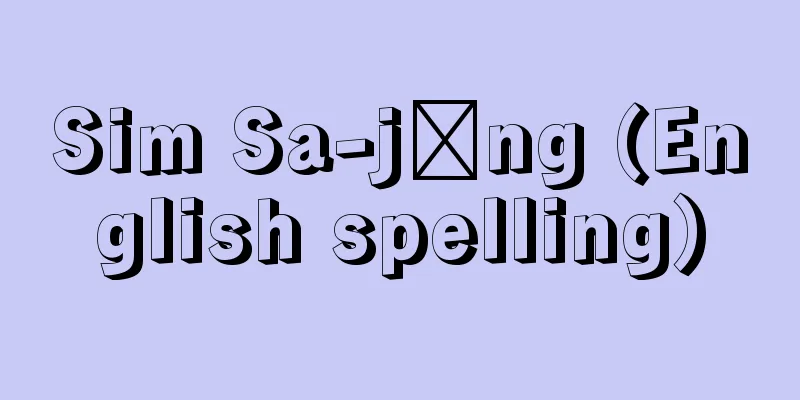Guo Ruoxiu

|
...However, as line drawing developed from simple to delicate and then to bold, the painter's feelings began to be reflected in the painting, and Zhang Yanyuan's "Records of Famous Paintings of the Past" considers qiyun to be the basis, and that vivid realism is when the painter's feelings are empathized with. After the mid-Tang Dynasty, when so-called ink painting emerged and landscape painting became popular along with it, the qiyun that was said to be applicable to portraits and animal paintings no longer applied, and in Guo Ruoxu's "Records of the Observations of Paintings" of the Northern Song Dynasty, qiyun is said to be innate and cannot be changed later, and depends on the painter's personality. After the development of ink painting, there seems to be a strong tendency to see the liveliness of qiyun in the subtle use of ink. ... From [Ink painting]...Generally speaking, the brush, or line drawing, symbolizes objective depiction, while ink symbolizes emotional expression. The world of ink painting can be compared to an ellipse formed between these two poles of brush and ink, where various wrinkle techniques are developed. The Northern Song Dynasty artists, such as Guo Ruoxu's "Sights and Wisdom of Painting," call it loose brushwork, light and simple, and borrow the land from the ground, and collectively call it the merit of breaking ink. Guo Xi's "Linquan Gaozhi" divides the brush and ink into light and simple, wrinkle rubbing, brushing, brushing, rubbing, sweeping, and dotting, and Han Zhuo's "Complete Collection of Landscapes and Water" says that wrinkle removal is a multifaceted style, and that each point and each stroke has its own style, and gives the names of 'hima wa fu wa', 'dot wa fu wa', 'scratchy wa fu', 'scratchy wa fu', 'horizontal wa fu', and 'intertwined water wa fu'. The ink painting technique was originally used for landscape painting, but was later applied to portraiture as well, and the crease technique used to paint trees and stones came to be regarded as the same as the crease technique used to paint the folds of people's clothing. From "Zugakenbunshi"...A treatise on the history of painting by Guo Ruoxu of the Northern Song Dynasty in China. 6 volumes. ... *Some of the terminology explanations that mention "Kuo Ruoxu" are listed below. Source | Heibonsha World Encyclopedia 2nd Edition | Information |
|
…ところが線描が素朴から繊細へ,さらに豪放へと発達すると,線描を通して画家の気持が絵画に反映するようになり,張彦遠の《歴代名画記》では気韻を立意と考えていて,生き生きとした写実とは画家の心情が感情移入されるのだという。中唐以降,いわゆる水墨画が興り,それに伴って山水画が盛行するようになると,人物画,動物画についていわれた気韻は通用しなくなり,北宋の郭若虚の《図画見聞記》では,気韻は生得のもので後天的にはいかんともしがたいとし,その画家の人柄によるという。水墨画が発達して以後は,墨の微妙な運用に気韻生動をみる傾向が強いようである。… 【水墨画】より…概していえば筆すなわち線描は客観的描写を,墨は主情的表現を象徴するもので,水墨画の世界はこの筆墨二極間に成立する楕円にも比せられ,そこに多様な皴法が展開されるのである。北宋の諸家,たとえば郭若虚の《図画(とが)見聞志》はそれを落筆,皴淡,留素借地とし,総称して破墨の功といい,郭熙の《林泉高致》は筆墨の間を斡淡,皴擦,渲,刷,捽,擢,点に分け,韓拙の《山水純全集》は皴払は多端で一点一画に諸家の体法のあることをいい,披麻皴,点錯皴,斫砕皴,横皴,連水皴という命名をあげている。 水墨の技法は元来山水画のものであったが,やがて人物画にも応用され,樹石を描く皴法と人物の衣文の皴法とは同一視された。… 【図画見聞志】より…中国,北宋の郭若虚(かくじやくきよ)の絵画史論。6巻。… ※「郭若虚」について言及している用語解説の一部を掲載しています。 出典|株式会社平凡社世界大百科事典 第2版について | 情報 |
>>: Scholars Association - gakushakyoukai
Recommend
Oshima (Kagoshima, Amami Oshima) - Oshima
…The main island of the Amami Islands in southern...
speleology
…Spelunking and potholing are also used rarely as...
Gangwon Province
This province occupies the central part of the eas...
Charles IX - Charles
King of France (reigned 1560-1574). Son of Henry I...
Conularia (English spelling)
A fossil animal closely related to the Scyphozoa o...
Tokuso - Tokusou
This refers to the successive heads of the Hojo c...
Koto (Japanese harp)
In a broad sense, it is a general term for stringe...
Porticus Aemilia (English notation) Porticus Aemilia
In the mid-2nd century BC, the city of Rome exper...
Diu
…It is located at the southern end of the Konkan ...
Carnauba palm - Carnauba palm
...The sago palm (illustration) is famous for its...
Granulation tissue
…If you peel back the scab, you will find a pink,...
Omega Centauri star cluster - Omega Centauri star cluster
NGC5139 is a globular cluster in the southern cons...
Angrecum sesquipedale - Angrecum sesquipedale
...The color is mostly white waxy, the flower dia...
Valuation profit, valuation loss
This refers to the difference between the book val...
Iitaka Rokkaji Temple
...Jakshitsu's disciples, Yaten Eishaku, Kosk...









